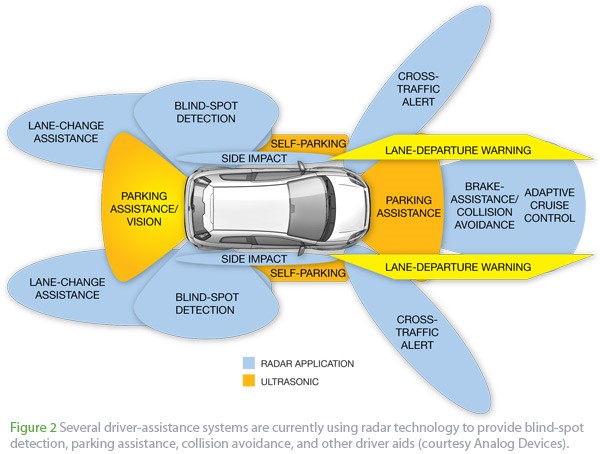U.S. proposes Vehicle-To-Vehicle mandate to avert crashes
 |
| Not only will cars be able to drive autonomously, they will also communicate with other cars around them |
U.S. auto safety regulators proposed requiring all new vehicles to be equipped with vehicle-to-vehicle communication systems, citing the technology's significant potential to reduce crashes.
The proposed mandate, released by the Department of Transportation today, would require all new cars and light trucks to have dedicated short-range communication systems that transmit and receive basic messages about the vehicles' speed, location, braking and other data. DSRC systems allow cars to "talk" to other vehicles on the road and to infrastructure equipped with the systems, allowing drivers to "see" around corners and be warned of potential crash.
"This technology has enormous safety potential to prevent hundreds of thousands of crashes and save lives," Transportation Secretary Anthony Foxx said on a conference call with reporters.
Under the proposal, automakers would be required to equip half of all new cars with the technology two years after the National Highway Traffic Safety Administration issues a final rule. Full penetration would be required within four years after the rule is final.
U.S. officials have said the technology could potentially reduce non-impaired traffic crashes by 80 percent once fully deployed.
Regulators signaled their intent to mandate V2V systems in August of 2014. Under today's proposal, the DSRC systems would be required to use a common set of communications protocols to ensure all vehicles "speak the same language," the DOT said.
The proposal also contemplates the technology working alongside crash avoidance technologies like automatic emergency braking to help prevent collisions, Foxx said. The proposed rule also has privacy and security requirements, including 128-bit encryption on vehicle data transmissions, the department said.
In addition, the department said it plans to soon issue guidance on vehicle-to-infrastructure communications.
Saving lives
Last year, there were 6.3 million U.S. vehicle crashes. In October, NHTSA said U.S. traffic deaths jumped 10.4 percent in the first six months of 2016. The jump follows a spike in 2015, when road deaths rose 7.2 percent to 35,092, the highest full-year increase since 1966.
The rule would not require vehicles currently on U.S. roads to be retrofitted with the technology. Foxx said owners couldn't turn off the technology but could turn off warnings.
The Alliance of Automobile Manufacturers, a trade group representing General Motors, Toyota Motor Corp., Volkswagen AG and other major automakers, noted the system is already being tested. The group said it would study the proposal.
Automakers are pushing to ensure that a portion of the spectrum reserved for connected vehicles is not used by other companies for other wireless device use. The U.S. Federal Communication Commission has begun testing potential sharing options.
Separately, the Federal Highway Administration plans to issue guidance for vehicle-to-infrastructure communications, which will help planners allow vehicles to "talk" to roadway infrastructure such as traffic lights. Autonews
